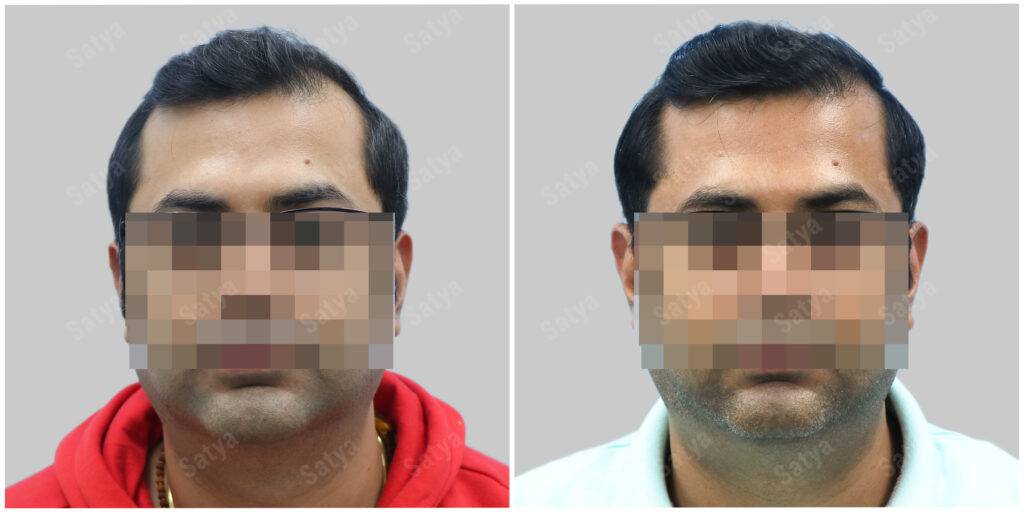Minoxidil
In a world where appearance plays a significant role, hair thinning or loss can be a source of distress for both men and women. The fear of losing one’s crowning glory prompts individuals to explore a myriad of solutions, from over-the-counter products to home remedies, medications, and even cosmetic procedures. Among the arsenal of hair loss remedies, Minoxidil, commonly known as Regaine, emerges as a potent topical treatment that offers hope to those seeking to combat hair loss.
Understanding Hair Loss: A Consultation is

What is Minoxidil?
For over three decades, Minoxidil, the star ingredient in Minoxidil, has been a stalwart in the battle against male and female pattern baldness. Available over the counter in liquid or foam form, Minoxidil has proven its efficacy as a powerful solution for addressing this common concern.
However, there’s a catch: Minoxidil isn’t a one-size-fits-all solution. It targets specific types of baldness and demands consistent application for optimal results. Patience is key, as it may take up to four months to witness noticeable changes. Sustained usage is vital to maintaining the regrowth achieved.
How does minoxidil work?
The mechanism of Minoxidil revolves around vasodilation. By enlarging hair follicles and prolonging the growth phase of hair, it paves the way for increased coverage on the scalp.
Yet, a word of caution: Minoxidil isn’t a permanent fix. Its effects are contingent on continued use; discontinuation might lead to a return to the status quo.
However, there’s a catch: Minoxidil isn’t a one-size-fits-all solution. It targets specific types of baldness and demands consistent application for optimal results. Patience is key, as it may take up to four months to witness noticeable changes. Sustained usage is vital to maintaining the regrowth achieved.
Who is the ideal candidate for the use of Minoxidil?

Who should not use Minoxidil?
Not all hair loss scenarios respond to over-the-counter medications like Minoxidil. If your hair loss entails patches of sudden shedding, postpartum hair loss, or a scalp that’s itchy, discolored, infected, or painful, Minoxidil might not hold the key to your solution.
It’s important to note that Minoxidil’s magic doesn’t work on hair loss resulting from external factors like harsh hair products, chemical treatments, hair grooming methods, or underlying medical conditions like thyroid issues. Furthermore, if nutritional deficiencies or scalp scarring are in play, it’s advised to avoid Minoxidil—or any topical or oral medication—without a doctor’s endorsement.

Side effects of Minoxidil:
As a topical treatment, Minoxidil enjoys a reputation for safety, with side effects being generally mild. Most common side effects include:
Scalp irritation
Hair growth in adjacent areas (like forehead)
Changes in hair texture or color
Irritation in the eyes
Serious side effects, though rare, warrant vigilance. Watch out for sudden, unexplained weight gain, dizziness, swollen extremities, or chest discomfort. Should any of these conditions arise, don’t hesitate to consult your doctor immediately.
Book an appointment
Consultation

Repair

Blog

Galleries

Frequently Asked Questions
Minoxidil is the active ingredient in Rogaine, which is a topical treatment for hair loss. Minoxidil, available over the counter, is commonly known as Regaine. It is a potent solution for combating hair loss.
Hair loss is not just a cosmetic concern; it often comes with emotional stress. Consulting a doctor or trichology specialist is crucial to diagnose the underlying cause of hair loss and receive tailored solutions that match individual requirements.
Minoxidil works through vasodilation, which enlarges hair follicles and prolongs the growth phase of hair. This leads to increased hair coverage on the scalp. However, it's important to note that Minoxidil's effects are contingent on continued use; discontinuation might result in a return to the previous hair loss status.
Minoxidil is most effective for individuals dealing with male or female pattern baldness, which has genetic underpinnings. It works best when started at the earliest signs of hair loss and is particularly effective on the vertex of the scalp, the crown area, and the receding hairline in men.
Minoxidil may not be suitable for all types of hair loss. It is less effective for hair loss resulting from factors like sudden patchy shedding, postpartum hair loss, scalp issues (itchiness, discoloration, infection, or pain), external factors (harsh hair products, chemical treatments, grooming methods), or underlying medical conditions like thyroid problems. It's advisable to use Minoxidil only with a doctor's endorsement when nutritional deficiencies or scalp scarring are involved.
Minoxidil is generally considered safe, with mild side effects. Common side effects include scalp irritation, hair growth in adjacent areas (like the forehead), changes in hair texture or color, and eye irritation.
Serious side effects of Minoxidil are rare but require vigilance. Watch out for sudden, unexplained weight gain, dizziness, swollen extremities, or chest discomfort. If any of these conditions arise, it's essential to consult a doctor immediately.




